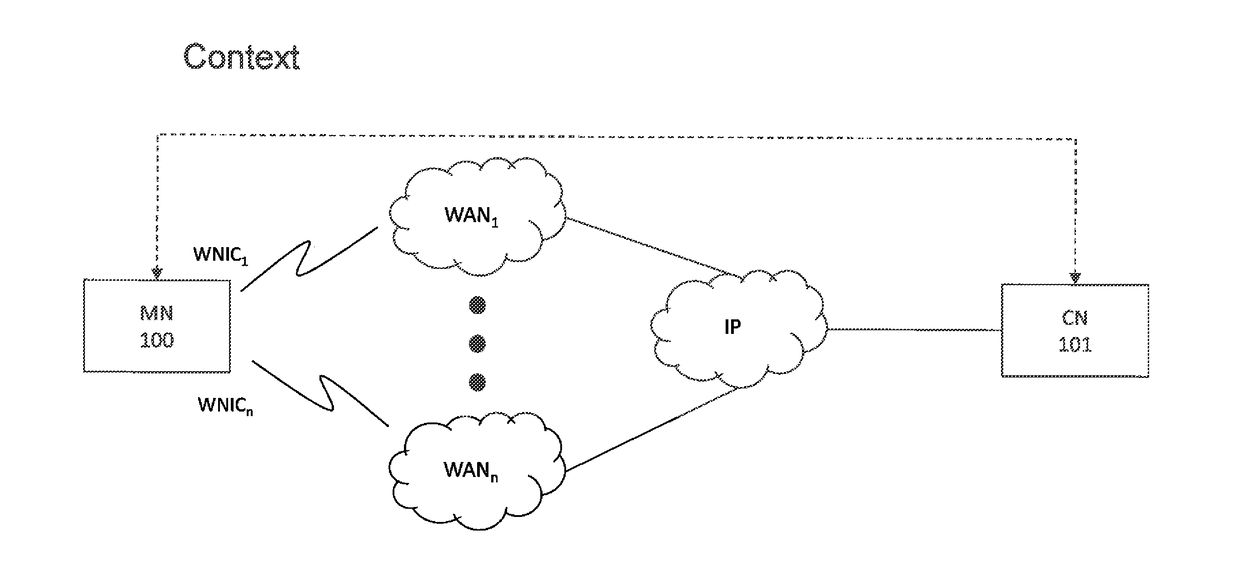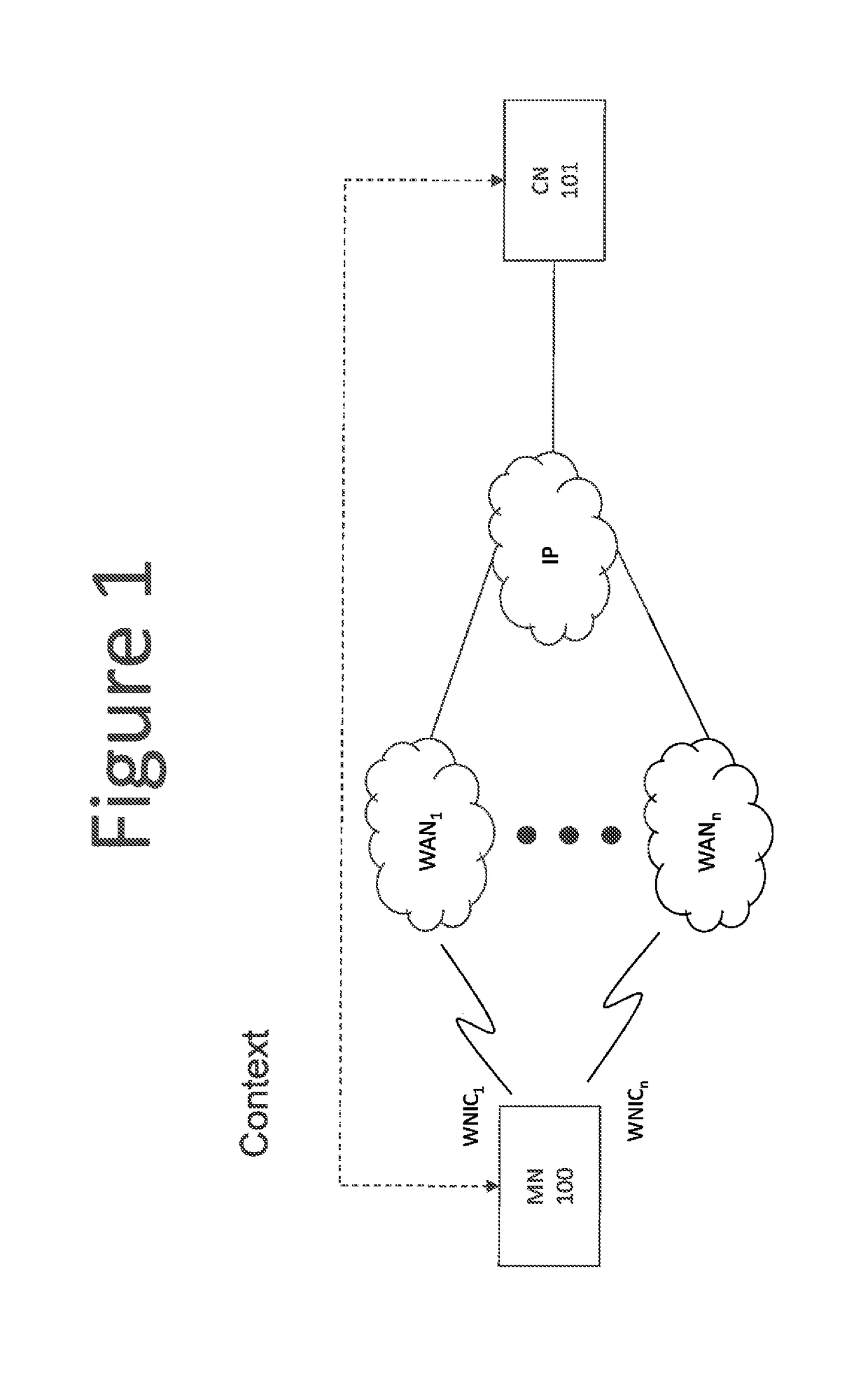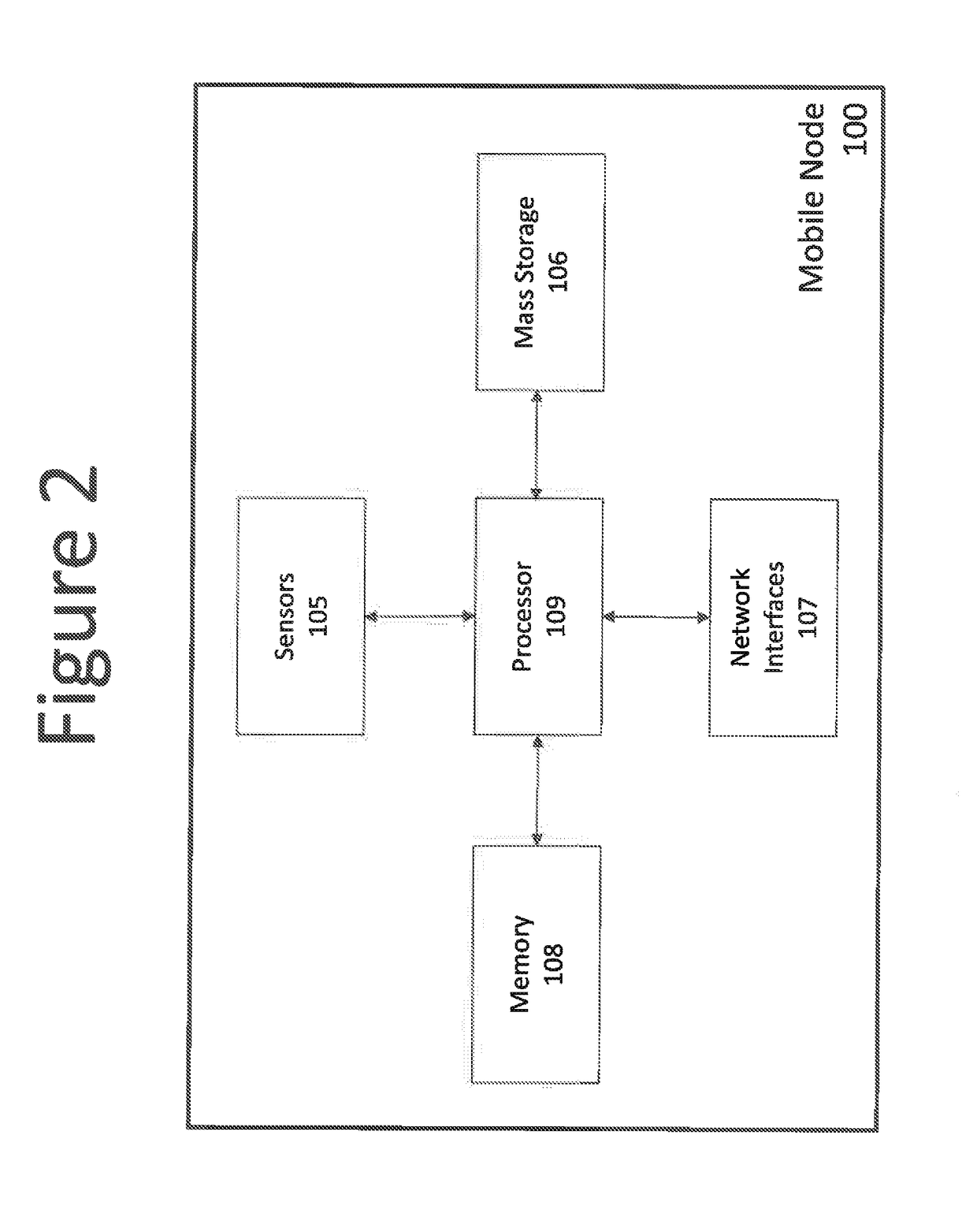Cognitive wireless system - predicted temporal overlap
a wireless system and cognitive technology, applied in the field of mobile terminals, can solve the problems of increasing the number of mobile devices in use and their ability, the network capacity shortfall of wireless service providers, and the demand far outstrips the capacity expansion possible, and achieves the effect of superior link quality factor
- Summary
- Abstract
- Description
- Claims
- Application Information
AI Technical Summary
Benefits of technology
Problems solved by technology
Method used
Image
Examples
operational example 1
[0388]1. An MN is provisioned to use Wi-Fi network “network A” on channels 1, 6 or 11 in a given region. The MN enters the specified region (as determined by an embedded GPS receiver) and begins to scan the prescribed channel set. A plurality of Access Points are detected and the MN selects the one with the strongest signal and associates. The connection is accepted and the MN begins utilizing the AP to pass traffic.
[0389]2. The MN continues to move through the region and eventually arrives at a location where signal strength of the AP it is currently associated has diminished and a new AP with better signal strength has been detected. The MN successfully associates with the new AP but is unable to pass traffic. User sessions are disrupted.
[0390]3. The MN continues to move and eventually locates a new AP with better signal characteristics and successfully associate ts with it and is able to pass traffic. User sessions are resumed. The MN formats a network failure report identifying:...
operational example 2
[0408]1-4. Same as example 1
[0409]5. NHA's correlation engine finds no corroborating reports so it delivers a network test request to MM 200 requesting UDP and TCP throughput and latency tests through the specified AP.
[0410]6. MM 200 selects suitable candidate MNs in the vicinity of the specified AP and transmits the network test request to them.
[0411]7. Upon receipt of the network test request, the MNs that have no alternate network links for user traffic wait for their Wi-Fi radio to go idle. MNs with alternate links reroute user traffic via those links. In both cases once the Wi-Fi radio has been freed up, the MN scans for the specified AP, associates with it, executes the prescribed network test and forwards a network test report to NHA 210.
[0412]8. Upon receipt of network test reports confirming the AP is not properly functioning, MM 200 instantiates a trouble ticket and proceeds with steps 7-12 from the previous example. Conversely, if the test results indicate the AP is perfo...
PUM
 Login to View More
Login to View More Abstract
Description
Claims
Application Information
 Login to View More
Login to View More - R&D
- Intellectual Property
- Life Sciences
- Materials
- Tech Scout
- Unparalleled Data Quality
- Higher Quality Content
- 60% Fewer Hallucinations
Browse by: Latest US Patents, China's latest patents, Technical Efficacy Thesaurus, Application Domain, Technology Topic, Popular Technical Reports.
© 2025 PatSnap. All rights reserved.Legal|Privacy policy|Modern Slavery Act Transparency Statement|Sitemap|About US| Contact US: help@patsnap.com



